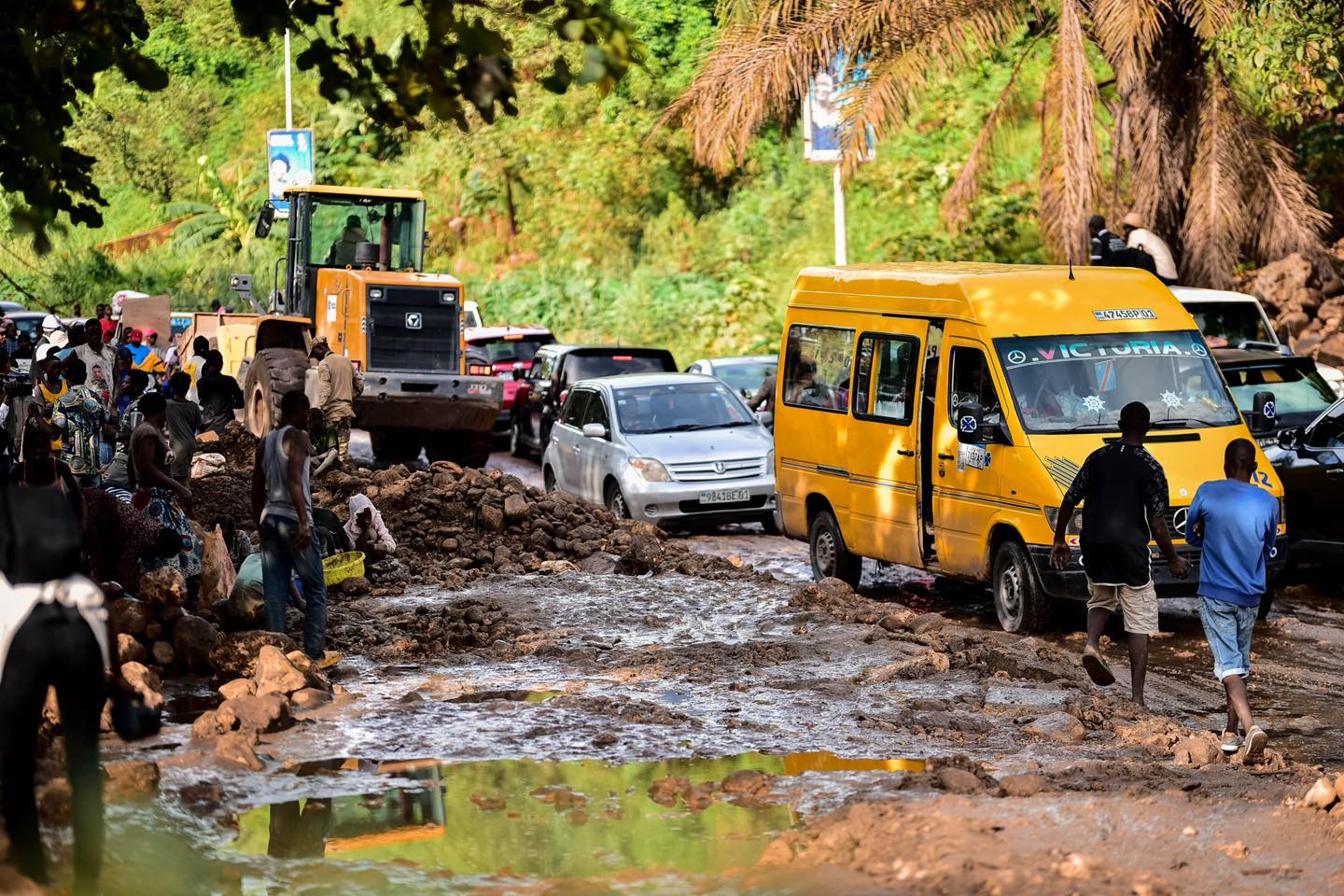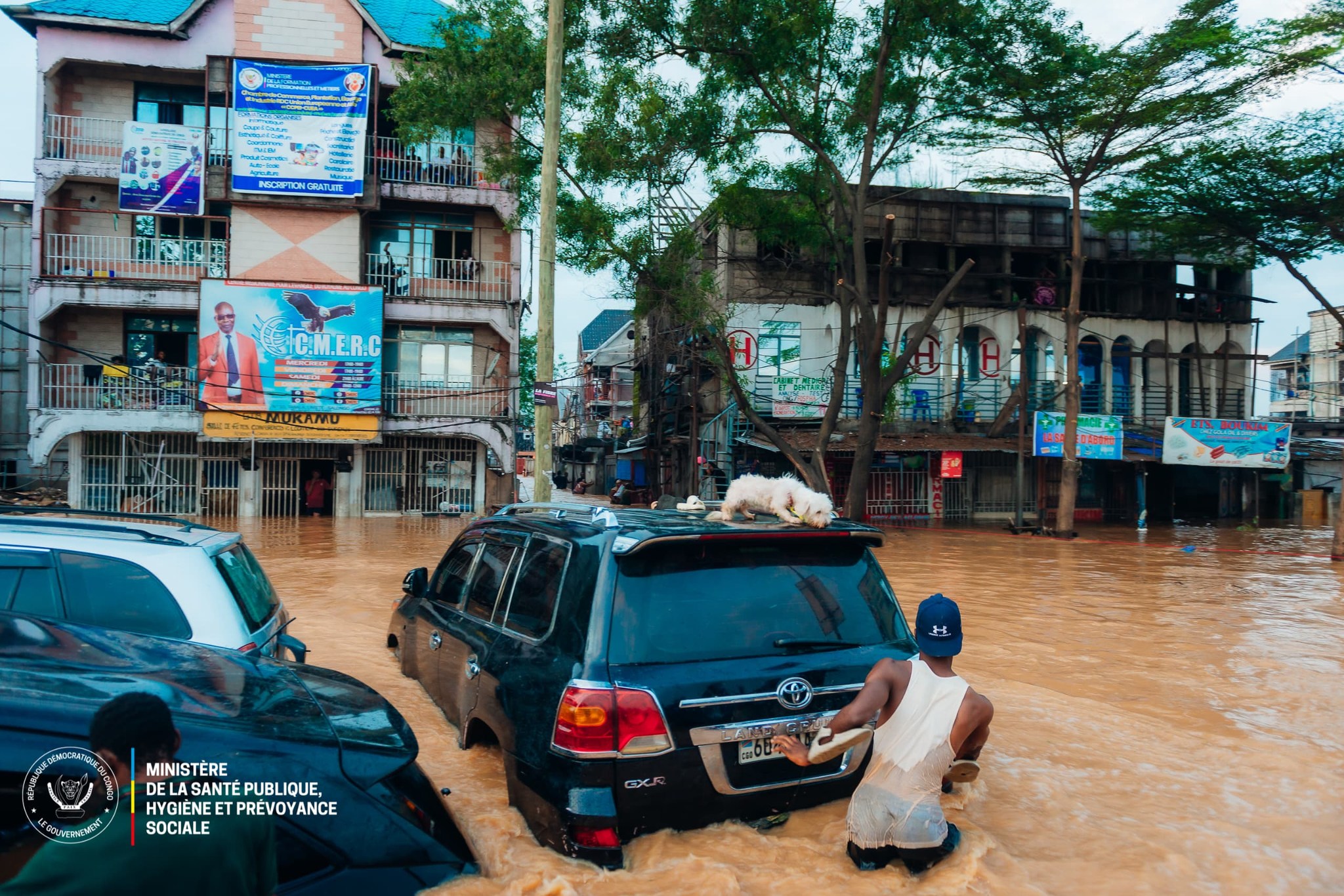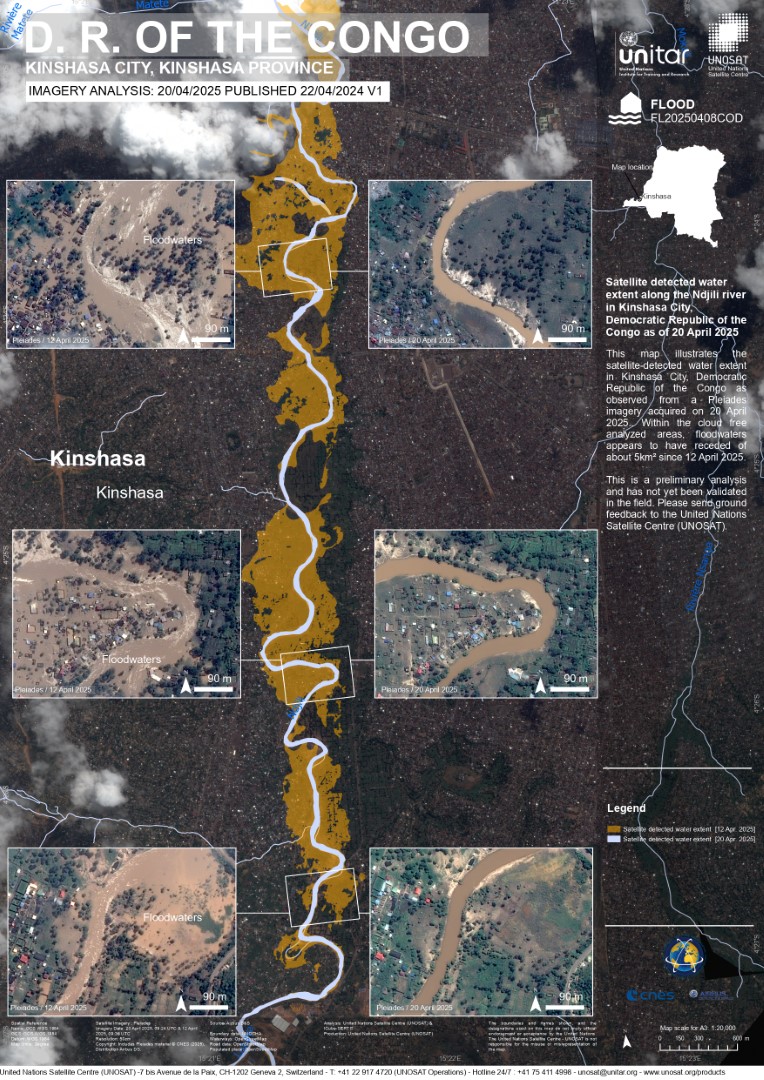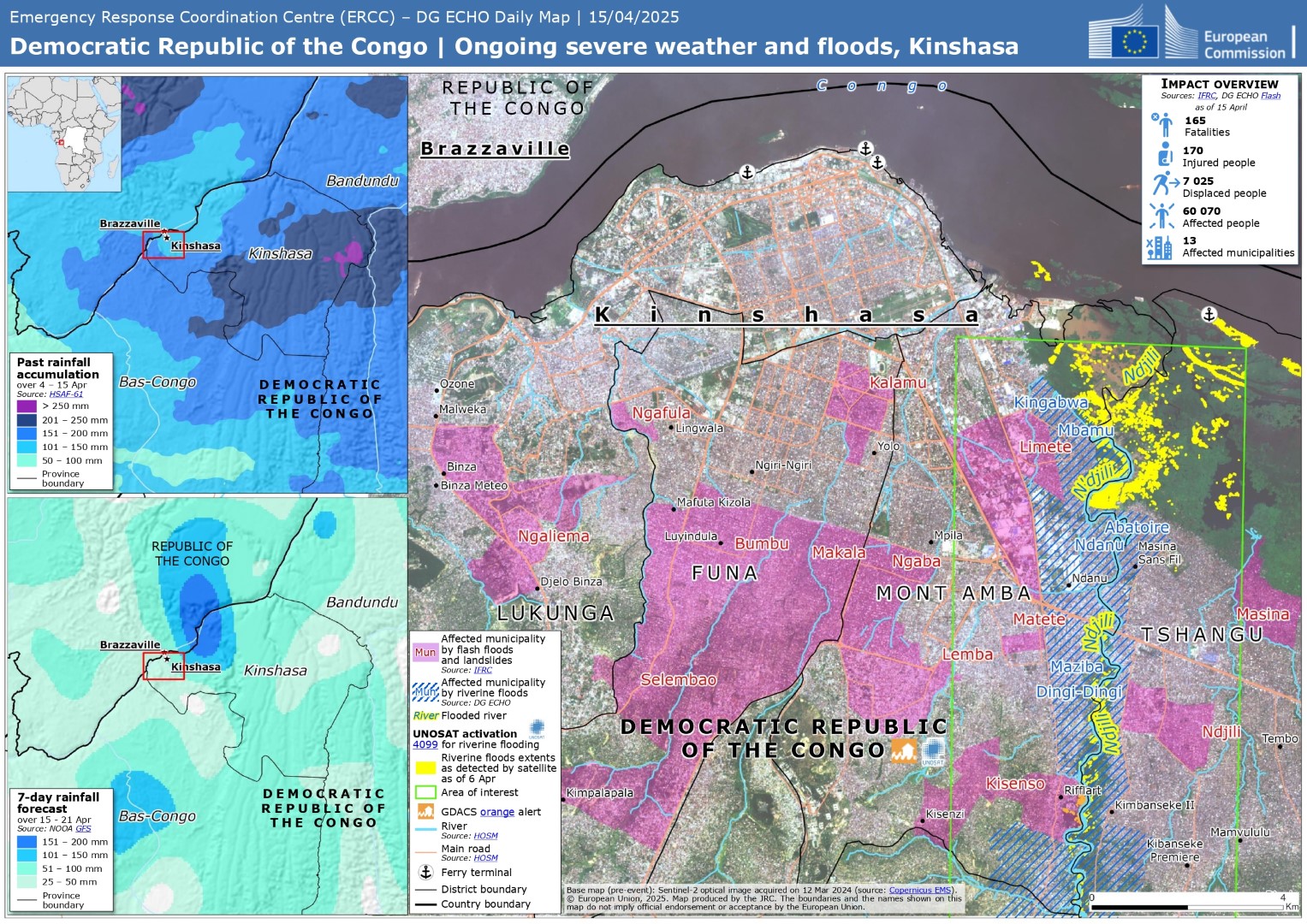Flooding in Democratic Republic of Congo, April 2025

by Richard Davies, floodlist
Kinshasa, the capital of the Democratic Republic of the Congo (DRC), experienced major flooding and landslides following heavy and sustained rainfall in early April 2025.
The flooding began during the night of 04 to 05 April. Heavy rain in the city and runoff from surrounding hills and river catchments in the neighbouring Congo Central Province quickly overwhelmed Kinshasa’s urban rivers, including the Ndjili and Lukaya, which run through densely populated areas of the city.

After the floods in Kinshasa, Democratic Republic of Congo, April 2025. Credit: Gouvernorat de Kinshasa
The floods caused extensive material damage, sweeping away dozens of vehicles and forcing residents to evacuate their homes. Floods and landslides affected 13 of the city’s 24 communes: Matete, Kisenso, Ngaba, Limete, Mount Ngafula, Ndjili, Kalamu, Bumbu, Ngaliema, Selembao, Makala, Lemba and Masina.
As of 13 April, reports from the International Federation of Red Cross and Red Crescent Societies (IFRC) indicated that 165 people had died and 28 were injured due to the flooding and associated landslides across the Kinshasa area.
According to preliminary data from the Kinshasa Red Cross, approximately 9,497 houses were flooded and 1,046 destroyed. Over 60,000 people were affected by the disaster.
A total of 7,025 individuals were displaced, many of whom found temporary shelter at four designated relief sites. According to IFRC, many displaced families were being housed in temporary shelters such as schools, churches, and stadiums.
“These structures offer limited protection from the elements, leaving people exposed to adverse weather conditions. In addition, the absence of mosquito protection significantly increases the risk of malaria, particularly among vulnerable groups like children and the elderly,” said IFRC.

Floods in Kinshasa, Democratic Republic of Congo, April 2025. Credit: Ministère de la santé/RDC
Critical infrastructure was also impacted. Roads across the city were severely damaged. Power, water, hygiene, and sanitation infrastructure were also either damaged or destroyed. Affected areas were without water supply for five consecutive days and as of early May access to safe water remained a persistent challenge, IFRC said.
The response to the disaster included the activation of the International Charter on Space and Major Disasters on 10 April and the United Nations Satellite Centre (UNOSAT) on 11 April. UNOSAT provided satellite-based assessments to support emergency teams in evaluating the extent of the damage, including the UNOSAT Live web map.

Satellite detected water extent along the Ndjili river in Kinshasa City, Democratic Republic of the Congo as of 20 April 2025. Credit: United Nations Satellite Centre (UNOSAT) See original here: https://unosat.org/products/4114
Floods in Tanganyika Province, April 2025
Flooding also occurred in areas of Tanganyika Province in DRC around this time, particularly in the territories of Kalemie and Nyunzu after heavy rain caused the Rugumba River to overflow on 11 April 2025.
According to the Provincial Division of Humanitarian Action and Solidarity, the flooding in Tanganyika resulted in two deaths, 15 injuries, and the destruction of 1,046 homes. Eight schools were also damaged. The number of people affected in the province exceeded 20,000, with around 10,000 people displaced.
Floods in Kinshasa in May 2025
According to reports from Radio Okapi, the United Nations radio station in the Democratic Republic of Congo, the city of Kinshasa saw further damaging floods and landslides after heavy rains from 02 May 2025. Radio Okapi said at least six people lost their lives and around 100 people were displaced.
The Underlying Causes of Flood Severity in Kinshasa
In the wake of the early April floods, various organisations and researchers suggested reasons why Kinshasa frequently experiences severe floods and landslides, and why the impacts are often so devastating.

Emergency Response Coordination Centre (ERCC) – DG ECHO Daily Map | 15/04/2025. Democratic Republic of the Congo | Ongoing severe weather and floods, Kinshasa. Credit: EuropeanUnion,2025. See original here: https://erccportal.jrc.ec.europa.eu/ECHO-Products/Maps#/maps/5257
According to the Congolese Network for Waste Management, poor urban planning and inadequate waste management are key contributing factors, reported by Radio Okapi on 11 April 2025.
Meanwhile, in an article for The Conversation, researchers from the Congo Basin Water Resources Research Centre highlighted urban expansion, lack of drainage infrastructure, and the dual flood risks from both local rainfall and the Congo River.
Cover image: After the floods in Kinshasa, Democratic Republic of Congo, April 2025. Credit: Gouvernorat de Kinshasa
By Karen O'Regan May 12, 2025, 12:07 p.m.
